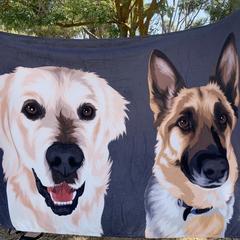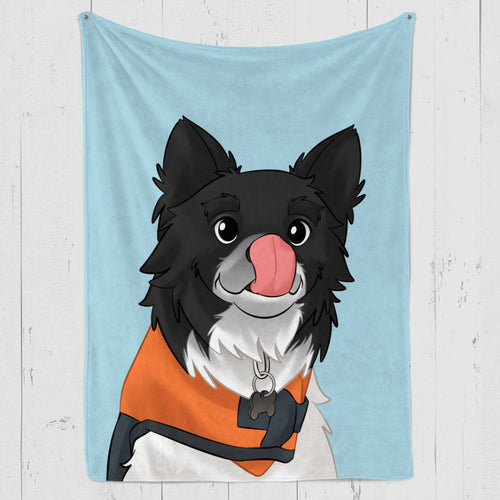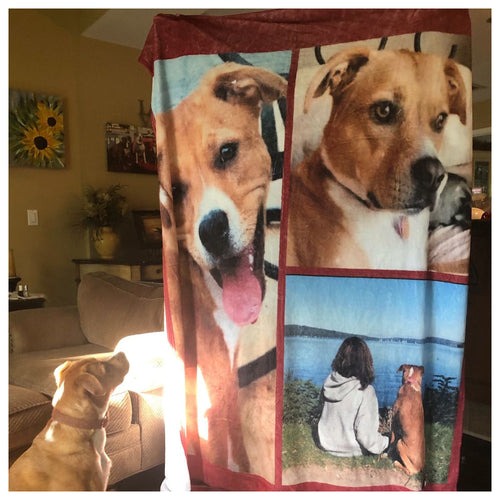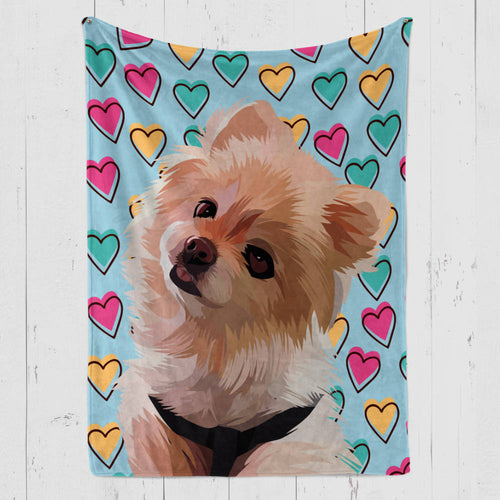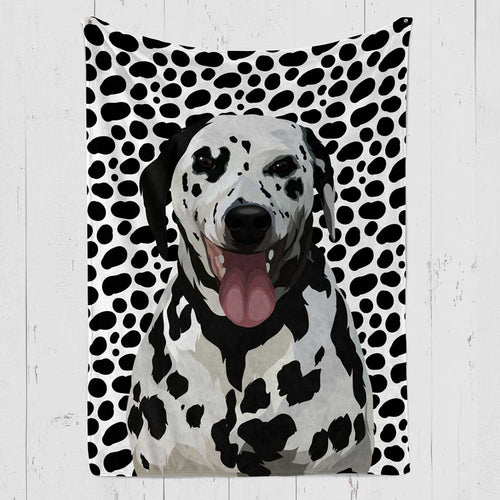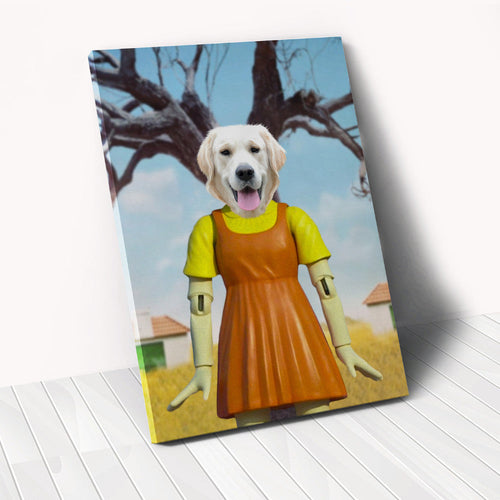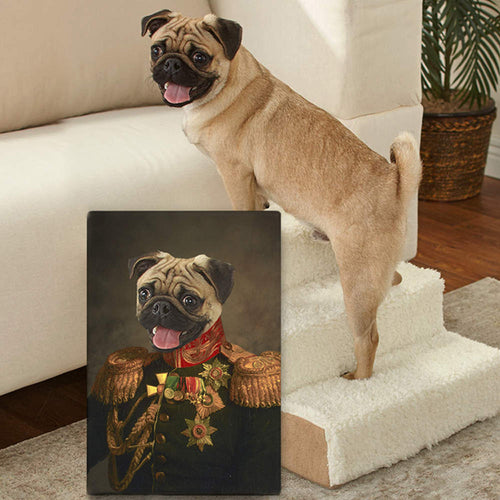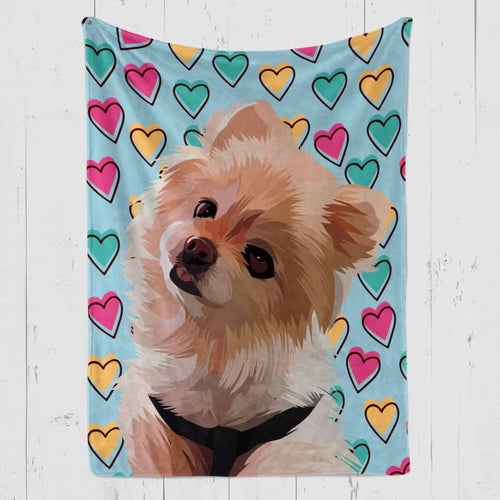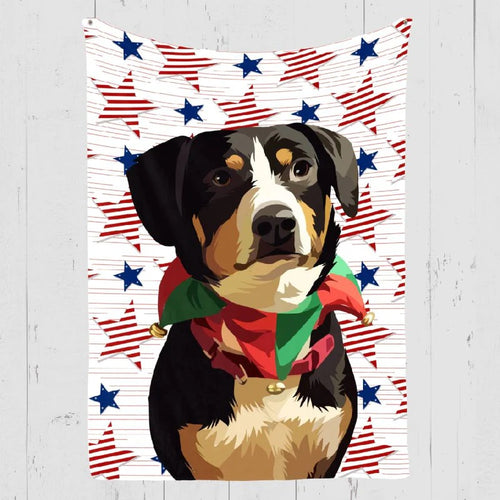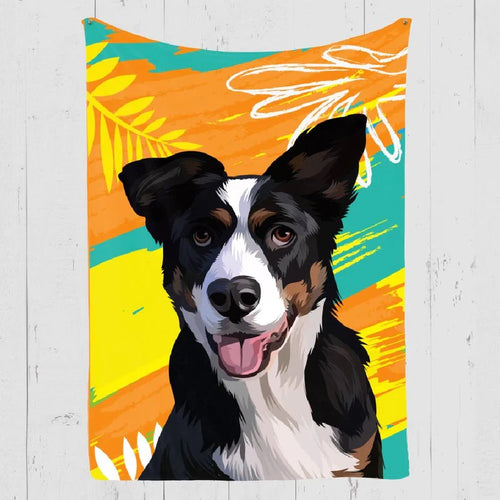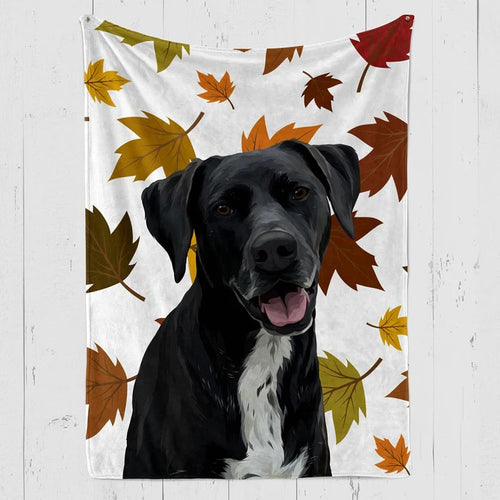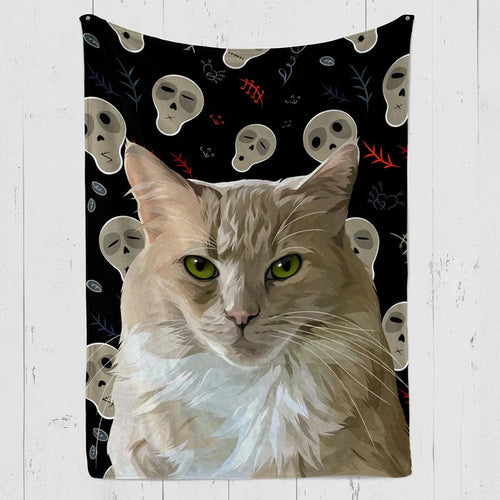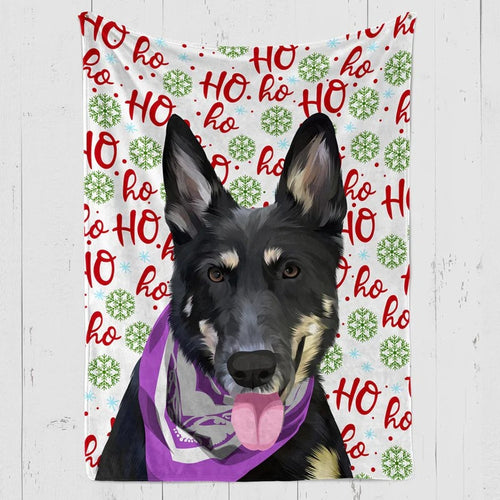
Introduction: It is frustrating to be aware that you could cut through quickly and cause bleeding for your dog because you cannot see the vein. As pet owners, we wish we never had to trim our dogs' nails. Let us show you how to locate the quick on your dog's black nail and simplify nail trimming so that you don't have to leave the nail too long.
What is a Dog’s Quick?
The fast in a canine's nail is essential for a vein. The hard outer shell, or casing, of a dog's nail is included in its anatomy. Inside that external shell is the mash.
A nerve and blood vessels can be found in the pulp. The blood vessels will bleed and be painful when the quick is cut. You can easily see the quick, which is pink or red, on a dog with white or clear nails. You won't be able to see the quick through the dog's black nails. The only way to see the quick on black dog nails is to trim the nail until you see the grey pulp carefully. A small grey circle will usually appear, and you will stop cutting here.
Ways to Identify the Dog Quick
1. First and foremost, it is relatively simple to locate the quick-on-white dog nails. The dog's actual nail will be white, while the quick will appear pink. Because of this, the quick can be seen clearly through the shell. However, if your dog has black nails, the quick will also be black (not pink!). As a result, you won't be able to see the quick from outside your dog's nail or through the shell. Finding the pulp is one of the most fundamental yet crucial techniques when locating the quick on black dog nails. The pulp is a dark, circular, easy-to-remember nail portion. It's right by the quick. Therefore, if you were clipping your dog's black nails and reaching the pulp, you should stop because you are nearly touching the quick.But how do you understand that you’ve reached or found the pulp?
Well, let's say you were trimming the nails on your dog: With the initial, only a few trims, you will be met by some time cut surface.
- Look at the nail from a distance.
- Clip one more time if it still looks white.
- Repeat until a black spout appears in the nail's centre. This is pulp.
- Examining the underside of your dog's nail is another simple method for locating the pulp. A groove will appear where your puppy's hard nail structure gives way to a fleshy or softer inner tissue. The pulp is the fleshy or soft tissue inside the nail.
2. Lift the puppy's paw and examine the nail's centre to locate the quick. If it has a small dark spot in the middle, it means that Quick is about to start. Stop cutting when you see it because it means you are close to the quick. Squeezing or applying light pressure to your dog's nail, especially the part you want to cut next, is another important trade trick for finding the quick. To avoid splintering the nail down to the quick, be careful not to squeeze too hard or apply too much pressure. If the dog pulls away from you in response to the pressure, you should stop because you are very close to the quick.
Important things to consider while finding the quick on black dog nails
1. Use the Right Tool
Although it may sound like I'm repeating myself, the tool you use can make or break your efforts to find the quick. If you utilise an old tough edge, you won't get a decent cross-segment of the nail. Ultimately, this will make it harder to see you and make it hard to tell if you've cut enough. Even if you have the right tools, you must make a strong cut, especially if your dog has hard nails. If you clip too slowly, you risk getting a rough cut rather than a smooth one. Use a sharp blade to get a smooth, clean finish for safety. This will allow you to get a good cross-section and find the quick better. Additionally, cutting quickly gets the job done quickly, minimizing your dog's anxiety.
2. Take Your Time: You should make the actual cut quickly and effectively.
You shouldn't rush the entire process. If you trim at a high speed, you risk cutting quickly. Trim only a tiny portion of the nail at a time. 1/6th of an inch is the recommended length. Examine the cut surface after each trim, as previously mentioned. It's safe if it's white. Continue trimming until a black spot appears in the nail's centre. Just before the quick, it sometimes turns pink. Cut tiny pieces and stop using your tool when you reach the black or pink spot.
3. Prepare with styptic powder in case you nick the quick
Bleeding is to be expected. A styptic powder comes into play here. Apply a lot of it to the cut to stop the bleeding. You can substitute flour, bar soap, baking soda, cornstarch, or turmeric powder instead of the powder. All of these will clog the vessel and quickly stop the bleeding.
4. Aim for a Relaxed Experience Nail trimming is ten times more difficult with a nervous dog.
As a result, finding pulp is a million times more difficult. To prevent this:
- Begin by introducing your dog to the cutting instrument. Make him feel at ease around the guillotine or clippers.
- Ensure your dog's space is comfortable and free of all distractions.
- When he overcomes an obstacle, reward him with treats and lavish praise.
- Make every effort to keep your dog relaxed throughout the trimming process. You'll have plenty of time to trim and find the quick this way.
5. It is recommended to clip the nails to the pulp.
If you cut the nails to the pulp, you make the quick go down. This is beneficial because it prevents overgrown nails and maintains the dog's health.
It's essential to keep in mind that your dog's quick nails always grow out with them. Therefore, if the nails are allowed to grow to an excessive length, you may only be able to trim a small amount and must wait approximately a week for the fast to fall before you can scrape more.
6. Keep in mind to trim the hair around the paws.
If your dog has grown a lot of hair around his paws, you should trim it to get a better look at the nail.
How to Trim Black Dog Nails

When you know how to locate the quick on darker nails, cut your dog's nails in the following order:
1. Make sure your dog is in a relaxed posture.
2. Treats should be given to your dog before and during nail trimming to encourage him to view it as a fun activity.
3. Push any fur out of the way so that the nail is visible while holding your dog's paw in your hand. Grooming scissors may be required to trim any fur around your dog's nails if you use a grinder to prevent it from getting caught.
4. With nail trimmers: Don't cut past the nail's curve; cut straight across the nail's tip. We recommend only trimming the nail's "hook" or curved portion. Instead of the thicker, "meatier" part, this is the thin tip of the nail.
5. Using a nail file: Use the grinder on low speed and only grind a small amount at a time for a few seconds on each nail. Beginning at the nail's base, work your way down to the tip.
6. You can tell when you have reached the pulp by occasionally checking the bottom of your dog's nails.
7. If you use nail clippers, you may need to file your dog's nails to even them out or smooth out any edges.Frequently Asked Questions
Why is it important to find the quick when trimming black dog nails?
It is important to find a quick when trimming the black dog's nails because if you cut a quick by mistake, you will injure your adorable dog and if you trim the quick by accident, the cut could also result in severe bleeding.
Are there any alternative methods to find quick-on-black dog nails?
Finding the Pulp is the key to finding the quick on black dog nails. You can use this soft tissue to determine when to stop cutting because it is just before the quick. It is identifiable by its circular appearance and is slightly lighter in colour than the dog nail. You should always make multiple minor cuts to prevent accidents when cutting black dog nails.
- To get started, cut a small hole in the nail. The nail's clipped end typically appears white.
- Check to see if you can locate a black area in the centre of the nail by making another small cut. Move on to the next step if there is a darker area. Otherwise, make a small cut again.
- The pulp is the dark area in the middle of the nail. The pulp will become more apparent if you make another cut. You should stop trimming the nail when you see the pulp.
Can I use a nail grinder instead of clippers to avoid cutting the quick?
A nail grinder is a tool for grooming that gradually grinds down your dog's nails with high-speed grinders. They make trimming your dog's nails less stressful. The advantages of using a nail grinder are as follows:
1. Prevents Injury:
The two parts of a dog's nail are the white nail and the "quick," which is the pink area with the nerves and blood vessels. When you use a clipper, you might cut too close to the "quick," which could cause bleeding. Because it gradually grinds down the length of your dog's nail, using a nail grinder can help prevent such injuries.
2. Suitable for Dogs with Fears:
Nail trimming is something other than what dogs enjoy doing. When you use a clipper to trim your dog's nails, your dog may become anxious if he has had a bad experience with clippers or has been injured before. When you use a grinder, you can ensure you don't cut the "quick" part of the nail and that your dog doesn't get hurt.
3. Simple to Use:
Using a nail grinder to trim your dog's nails will be easier if you are a new pet owner. When you utilise a nail trimmer, you must be extremely cautious while trimming your canine's nails, or, in all likelihood, you might hurt your dog. Nail grinders are, on average, easier to operate.
4. Perfect for Thin Nails:
If your dog's nails are too thick, clipping them with a clipper may be difficult. The nail grinder is very helpful in this situation because it can grind down even thick nails.
5. More supple nails:
Your dog's nails are smoothed out with a nail grinder. Your dog will benefit from this because it keeps their nails it's getting stuck in carpets or other furniture. Because smooth nails do not cause as many scratches as sharp nails, they will benefit you, mainly if your dog tends to jump up on you.
These nail grinders last a long time, but if you want to make them last even longer, you can buy inexpensive Replacement Accessory Packs instead of throwing them out and purchasing new ones.
What should I do if I accidentally cut the quick while trimming my dog's nails?
If you cut the quick on a dog's nail, it will bleed and be painful for a few minutes because it is a nerve. The extent to which the dog’s quick is cut accidentally determines how much bleeding occurs. If the quick was barely knicked, you only need to apply a little pressure to the nail with a clean towel. You might only see a small dot of blood. To stop the bleeding from the nail, you'll need to apply pressure and use a clotting powder if the quick was cut further down. You can also stop the bleeding with flour, baking soda, cornstarch, a bar of soap, or clotting powder if you don't have it on hand.
Can I learn how to trim my dog's nails from a professional groomer or veterinarian?
Yes, anyone can learn how to trim dogs' nails from a professional groomer. Here are some tips and suggestions from a veterinarian for trimming dogs' nails:-
- Use treats and tummy tickles, and get someone to hold your dog.
- The claw should be off or roughly at the pad's height when the foot is on the ground.
- The nail clippers should be 3 to 4 millimetres below the quick at a 45-degree angle. Avoid cutting it since the quick is home to nerves and blood vessels.
- When black nails slowly nibble away from the tip until a black dot appears in the middle, the quick is nearby.
- Always stop if you think your dog might bite or scratch you or are stressed out.
- Beginning with their shorter and less sensitive back feet, proceed to their front paws, and remember their dew claws.
- If you don't feel confident using nail clippers or your dog is extremely scared, hire a professional to trim its nails.
- Praise and treat your pet frequently to get them to remain still and make eye contact with you.
Conclusion
In conclusion, locating the quick on black dog nails is crucial for maintaining your pet's nail health and preventing accidental injuries. Following the step-by-step guide outlined in this article, you can confidently navigate this task easily and precisely. Remember, patience and care are key when handling your dog's nails, especially if they have dark-coloured nails that make the quick harder to visualise. Regularly trimming your dog's nails promotes their comfort and helps prevent potential complications. With practice and knowledge from this guide, you can confidently maintain your furry friend's nail health. I hope you have understood how to locate the quick on black dog nails now, empowering you to provide the best care for your beloved pet.
Resources
- The dodo.com
https://www.thedodo.com/dodowell/how-to-cut-black-dog-nails
- Patch puppy.com
https://patchpuppy.com/health-safety/how-to-find-the-quick-on-black-dog-nails/
Recommended Articles :
Latest Review on Woof Blankets
To have such a masterpiece by my side every day is a gift for me and my memories with Rex. Thank you WoofBlankets for such an opportunity to recreate his image on a blanket.Lara o’ Miguel US, California
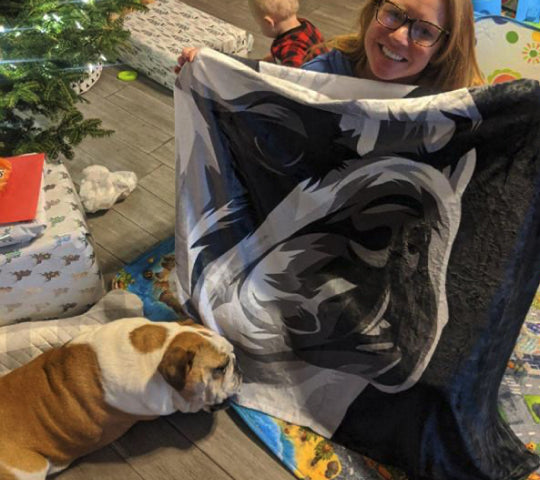
COLLECTION WORTH EVERY PENNY
BEST SELLERS
-
Woofy Single Color Custom Pet Blanket
![Woofy Single Custom Pet Blanket – Woof Blanket]()
- -41%
BlanketsSHOP NOW- Regular price
- from $64.95
- Sale price
- from $64.95
- Regular price
-
$109.95 - Unit price
- per
Sold out -
Exclusive Christmas Custom Pet Blanket
![Exclusive Custom Pet Blanket]()
- -39%
BlanketsSHOP NOW- Regular price
- from $69.95
- Sale price
- from $69.95
- Regular price
-
$114.95 - Unit price
- per
Sold out -
Christmas Custom Pet Blanket
![Christmas Custom Pet Blanket - Custom Dog Blankets]()
- -40%
BlanketsSHOP NOW- Regular price
- from $69.95
- Sale price
- from $69.95
- Regular price
-
$115.95 - Unit price
- per
Sold out -
Watercolor Pet Portraits
![]() SHOP NOW
SHOP NOW- Regular price
- from $59.95
- Sale price
- from $59.95
- Regular price
-
- Unit price
- per
Sold out -
Woofy Christmas Custom Dog Blanket
![Woofy Christmas Custom Dog Blanket]()
- -39%
BlanketsSHOP NOW- Regular price
- from $69.95
- Sale price
- from $69.95
- Regular price
-
$114.95 - Unit price
- per
Sold out -
Modern Pet Owner Portrait
![]()
- -32%
CanvasSHOP NOW- Regular price
- from $84.95
- Sale price
- from $84.95
- Regular price
-
$124.95 - Unit price
- per
Sold out -
Woof Splash Custom Pet Blanket
![Woof Splash Custom Pet Blanket]()
- -39%
BlanketsSHOP NOW- Regular price
- from $69.95
- Sale price
- from $69.95
- Regular price
-
$114.95 - Unit price
- per
Sold out -
The Admiral - Custom Pet Portrait
![The Admiral - Custom Pet Portrait Online]()
- NEW
- -25%
CanvasSHOP NOW- Regular price
- from $59.95
- Sale price
- from $59.95
- Regular price
-
$79.95 - Unit price
- per
Sold out -
Wings of Loyalty - Custom Pet Portrait
![]()
- NEW
CanvasSHOP NOW- Regular price
- from $59.95
- Sale price
- from $59.95
- Regular price
-
- Unit price
- per
Sold out -
Pet Memorial Custom Photo Collage Blanket
![Personalized pet memorial quilt with photos]()
- -41%
BlanketsSHOP NOW- Regular price
- from $64.95
- Sale price
- from $64.95
- Regular price
-
$109.95 - Unit price
- per
Sold out -
Celestial Paws - Custom Pet Portrait
![]() CanvasSHOP NOW
CanvasSHOP NOW- Regular price
- from $59.95
- Sale price
- from $59.95
- Regular price
-
- Unit price
- per
Sold out -
The Loyal Soul - Custom Pet Portrait
![]()
- NEW
SHOP NOW- Regular price
- from $59.95
- Sale price
- from $59.95
- Regular price
-
- Unit price
- per
Sold out -
Cartoonized Pet Portraits (New)
![Cartoonized Pet Custom Portraits Online]()
- -36%
SHOP NOW- Regular price
- from $59.95
- Sale price
- from $59.95
- Regular price
-
$93.95 - Unit price
- per
Sold out -
The French Sailor - Custom Pet Portrait
![]()
- -25%
CanvasSHOP NOW- Regular price
- from $59.95
- Sale price
- from $59.95
- Regular price
-
$79.95 - Unit price
- per
Sold out -
The Policeman - Custom Pet Portrait
![]()
- NEW
- -25%
CanvasSHOP NOW- Regular price
- from $59.95
- Sale price
- from $59.95
- Regular price
-
$79.95 - Unit price
- per
Sold out -
The General - Custom Pet Portrait
![]()
- NEW
- -25%
CanvasSHOP NOW- Regular price
- from $59.95
- Sale price
- from $59.95
- Regular price
-
$79.95 - Unit price
- per
Sold out -
Woof Love Custom Pet Blanket
![Woof Love Custom Pet Blanket]()
- -39%
BlanketsSHOP NOW- Regular price
- from $69.95
- Sale price
- from $69.95
- Regular price
-
$114.95 - Unit price
- per
Sold out -
Summer Time Custom Pet Blanket
![Summer Time Custom Pet Blanket]()
- -39%
BlanketsSHOP NOW- Regular price
- from $69.95
- Sale price
- from $69.95
- Regular price
-
$114.95 - Unit price
- per
Sold out -
The Ambassador - Custom Pet Portrait
![The Ambassador - Custom Pet Portrait Online]()
- NEW
- -25%
CanvasSHOP NOW- Regular price
- from $59.95
- Sale price
- from $59.95
- Regular price
-
$79.95 - Unit price
- per
Sold out -
Fall In Love Custom Pet Blanket
![Fall In Love Custom Dog Blanket]()
- NEW
- -39%
BlanketsSHOP NOW- Regular price
- from $69.95
- Sale price
- from $69.95
- Regular price
-
$114.95 - Unit price
- per
Sold out -
The Classy Lady - Custom Pet Portrait
![The Classy Lady]()
- NEW
- -25%
CanvasSHOP NOW- Regular price
- from $59.95
- Sale price
- from $59.95
- Regular price
-
$79.95 - Unit price
- per
Sold out -
The Duke - Custom Pet Portrait
![The Duke - Custom Pet Portrait]()
- NEW
- -25%
CanvasSHOP NOW- Regular price
- from $59.95
- Sale price
- from $59.95
- Regular price
-
$79.95 - Unit price
- per
Sold out -
Dog In Suit- Custom Pet Portrait
![Dash Dog In Suit- Custom Pet Portrait Online]()
- NEW
- -25%
CanvasSHOP NOW- Regular price
- from $59.95
- Sale price
- from $59.95
- Regular price
-
$79.95 - Unit price
- per
Sold out -
The Princess - Custom Pet Portrait
![]()
- NEW
- -25%
CanvasSHOP NOW- Regular price
- from $59.95
- Sale price
- from $59.95
- Regular price
-
$79.95 - Unit price
- per
Sold out -
Modern Pet Portrait with One Mug
![Modern Pet Portrait with One Mug]()
- -25%
Print MaterialSHOP NOW- Regular price
- from $99.95
- Sale price
- from $99.95
- Regular price
-
$133.95 - Unit price
- per
Sold out -
The Aristocrat - Custom Pet Portrait
![The Aristocrat - Custom Pet Portrait At Best Price]()
- NEW
- -25%
CanvasSHOP NOW- Regular price
- from $59.95
- Sale price
- from $59.95
- Regular price
-
$79.95 - Unit price
- per
Sold out -
Single Color Custom Blanket with 1 Mug
![Single Color Custom Blanket with 1 Mug]() BlanketsSHOP NOW
BlanketsSHOP NOW- Regular price
- from $99.95
- Sale price
- from $99.95
- Regular price
-
- Unit price
- per
Sold out -
Single Color Custom Blanket with 2 Pillows
![Single Color Custom Pet Blanket with 2 Pillows]()
- -21%
BlanketsSHOP NOW- Regular price
- from $99.95
- Sale price
- from $99.95
- Regular price
-
$125.95 - Unit price
- per
Sold out -
The Dog in Suit Custom Pet Mug
![]()
- -20%
MugsSHOP NOW- Regular price
- $39.95
- Sale price
- $39.95
- Regular price
-
$49.95 - Unit price
- per
Sold out -
Angel Custom Pet Mug
![]()
- -20%
MugsSHOP NOW- Regular price
- $39.95
- Sale price
- $39.95
- Regular price
-
$49.95 - Unit price
- per
Sold out -
This Human Belongs To - Custom Pet Mug
![]()
- NEW
- -20%
MugsSHOP NOW- Regular price
- $39.95
- Sale price
- $39.95
- Regular price
-
$49.95 - Unit price
- per
Sold out -
It's Not Dog Hair Custom Pet Mug
![]()
- NEW
- -20%
MugsSHOP NOW- Regular price
- $39.95
- Sale price
- $39.95
- Regular price
-
$49.95 - Unit price
- per
Sold out -
My Dog Is My Valentine Custom Pet Mug
![]()
- NEW
- -20%
MugsSHOP NOW- Regular price
- $39.95
- Sale price
- $39.95
- Regular price
-
$49.95 - Unit price
- per
Sold out -
3 Photos With Message Custom Pet Mug
![]()
- NEW
- -20%
MugsSHOP NOW- Regular price
- $39.95
- Sale price
- $39.95
- Regular price
-
$49.95 - Unit price
- per
Sold out -
My Valentine Has Four Legs- Personalized Mugs
![]()
- NEW
- -20%
MugsSHOP NOW- Regular price
- $39.95
- Sale price
- $39.95
- Regular price
-
$49.95 - Unit price
- per
Sold out -
Dog Mamma Custom Pet Coffee Mug
![]()
- -20%
MugsSHOP NOW- Regular price
- $39.95
- Sale price
- $39.95
- Regular price
-
$49.95 - Unit price
- per
Sold out -
Uncle Sam - Custom Pet Portrait
![]()
- NEW
- -25%
CanvasSHOP NOW- Regular price
- from $59.95
- Sale price
- from $59.95
- Regular price
-
$79.95 - Unit price
- per
Sold out -
The Revolutionary Emperor - Custom Pet Portrait
![]()
- NEW
- -25%
CanvasSHOP NOW- Regular price
- from $59.95
- Sale price
- from $59.95
- Regular price
-
$79.95 - Unit price
- per
Sold out -
The Princess Paws - Custom Pet Portrait
![]()
- -25%
CanvasSHOP NOW- Regular price
- from $59.95
- Sale price
- from $59.95
- Regular price
-
$79.95 - Unit price
- per
Sold out -
The Dark Crusader Knight - Custom Pet Portrait
![]()
- -25%
CanvasSHOP NOW- Regular price
- from $59.95
- Sale price
- from $59.95
- Regular price
-
$79.95 - Unit price
- per
Sold out

